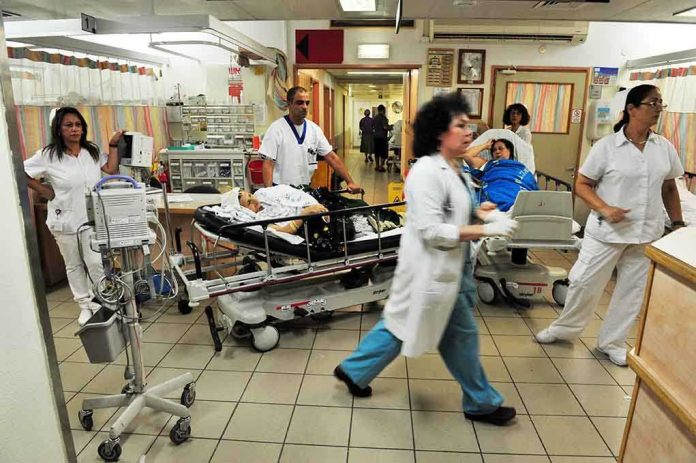
One Arizona resident has died from the plague—yes, the same Black Death that wiped out half of Europe centuries ago—and health officials are scrambling, while prairie dogs are dropping like flies in the desert, reminding us that even as government spending explodes and politicians bicker, nature still has ways of humbling the bureaucracy.
At a Glance
- Arizona patient dies from pneumonic plague in Flagstaff, marking a rare but deadly US case
- Health officials investigating prairie dog die-off as potential plague reservoir
- Risk to public declared “very low,” but public health costs and anxiety spike
- No vaccine exists, and the root cause of infection is still unknown
Arizona’s Plague Death: When Government Isn’t Ready for the Unexpected
Here we are in 2025, and the plague—yes, the medieval, rat-infested, flea-borne Black Death—comes knocking in Arizona. A northern Arizona resident arrived at Flagstaff Medical Center, gravely ill, and died the same day. Doctors rushed to test for the cause, and the results stunned the hospital: pneumonic plague, the deadliest form of Yersinia pestis infection. While the CDC and Coconino County Health and Human Services offered the standard “the risk is very low” soundbite, local residents were left wondering how, in an age of trillion-dollar government budgets, we can still be blindsided by a disease that’s supposed to be the stuff of history books.
As if the specter of the plague wasn’t enough, the same week saw a mysterious die-off of prairie dogs northeast of Flagstaff. Prairie dogs, the region’s adorable rodents, are infamous for serving up plague-infected fleas on a platter to the local ecosystem. Health officials rushed to the area, collecting fleas for testing and dousing burrows with insecticide. The last time this happened, back in 2017, the area had to be closed off for months—because apparently, rodents don’t care about government “Keep Out” signs any more than border jumpers do.
Public Health Response: Too Little, Too Late?
The Coconino County Board of Supervisors Chair issued condolences and asked for privacy, but the public wanted answers. Officials insisted there was “no direct link” between the prairie dog die-off and the human death—yet both incidents unfolded in the same rural corridor, notorious for plague-positive fleas. The CDC and state health departments ramped up surveillance, spraying insecticides and warning residents to avoid contact with wild animals. But let’s be real: when you’re dealing with a disease that killed millions in the Middle Ages, hearing that “the risk is very low” is about as comforting as being told that inflation is “transitory.”
Prairie dog burrows were targeted for environmental sampling. While it’s easy for bureaucrats in Phoenix or Washington to issue press releases and hold briefings, it’s the locals—property owners, ranchers, and families—who have to check their kids and pets for fleas. Meanwhile, the media, eager for clicks, played up the story with ominous headlines and images of mask-wearing health officials tromping through the desert. The irony is rich: after years of government handwringing over COVID and climate change, one unlucky flea bite is all it takes to remind us what real risk looks like.
Ongoing Risks: Nature, Not Politics, Sets the Rules
Though human plague cases are rare—averaging about seven a year in the entire US—Arizona’s history with the disease is persistent. The region’s wild rodent populations are natural reservoirs for Y. pestis, and no amount of government funding, press releases, or “awareness campaigns” is going to change that. There’s no vaccine available in the US, and once pneumonic plague sets in, survival depends on catching it within 24 hours and getting the right antibiotics. In this case, the patient didn’t stand a chance.
Yet, while the CDC and state authorities scramble for answers, the root cause remains a mystery. Was it a flea from a prairie dog, or something else? Officials can’t say. But one thing is certain: every time a rare, deadly disease strikes, the government’s promises of safety and preparedness ring hollow. Budgets soar, public health departments grow, but nature doesn’t care about bureaucracy, diversity training, or bloated administrative overhead. It’s a stark reminder: when reality bites—sometimes literally—you’re on your own.
Sources:
Arizona patient dies of bubonic plague in emergency room: Report
Plague confirmed in Arizona resident who died at Flagstaff hospital
Pneumonic plague confirmed in Arizona after patient dies
Northern Arizona resident dies of plague, officials confirm



